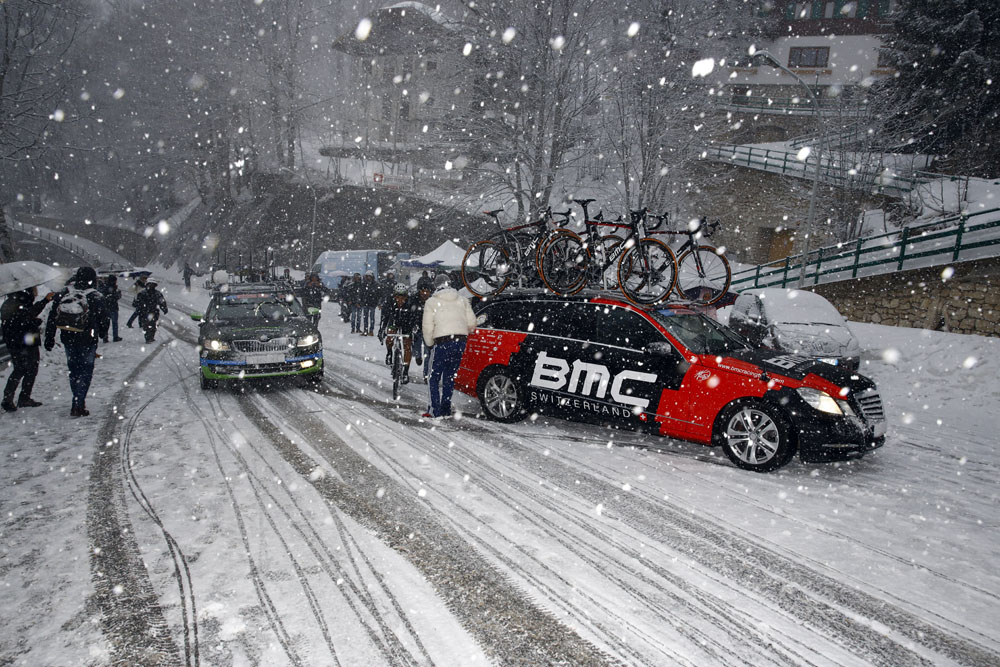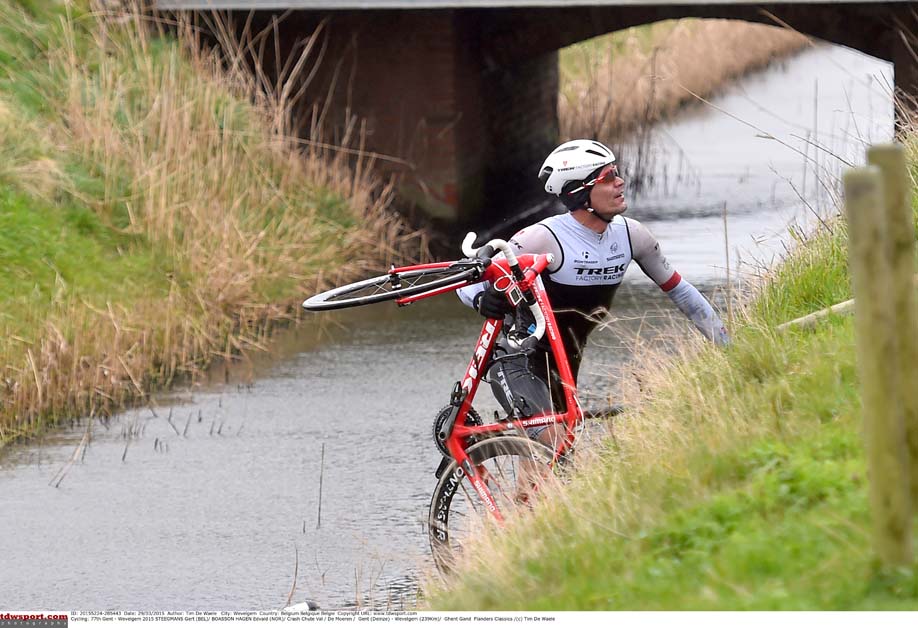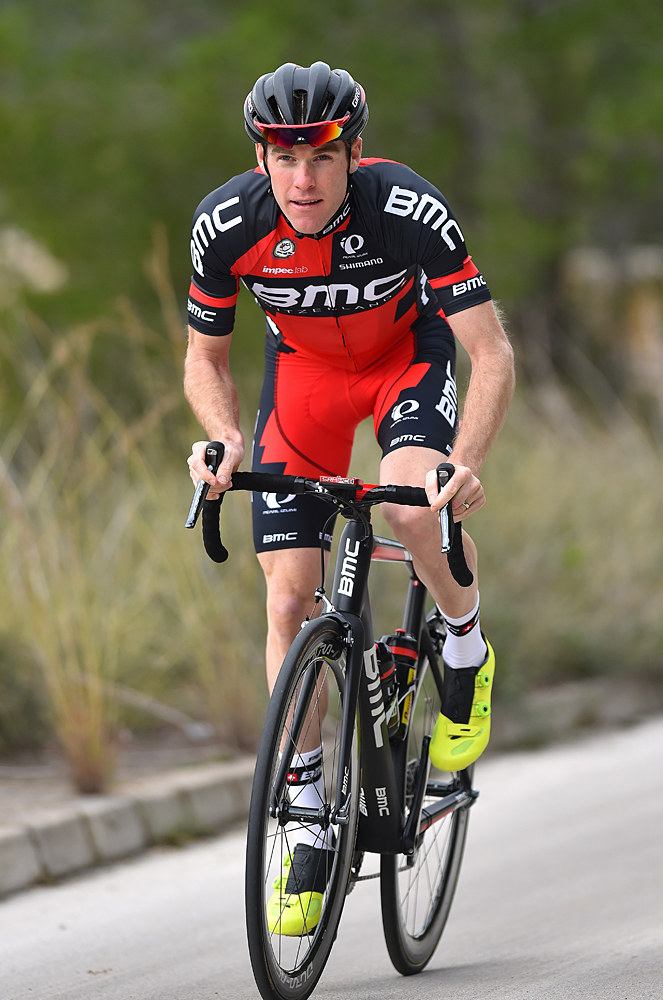Extreme Weather Protocol a success, but needs improvement says Bookwalter
ANAPRC pleased to see first use of new UCI procedure




The ANAPRC's (Association of North American Professional Road Cyclists) first major initiative came to fruition today with the inaugural execution of the UCI's Extreme Weather Protocol at the Clasica de Almeria.
While there was some misunderstanding of the plan for the race in light of the dangerously high winds, the ANAPRC executive director Michael Carcaise and founding member Brent Bookwalter were pleased that the protocol they helped to push through was effective in protecting the safety of the riders.
"We're happy - I sense the riders are pleased with the outcome - we're happy with this first step and the process can only improve from here," Carcaise said to Cyclingnews.
Bookwalter said that the riders knew what they were getting into with the wind when they left the hotel where all of the racers were staying. "When we came out this morning the wind was amazing. It was hard to even walk to the bus. There were intense gusts. When we got to the start, in the city where there was more shelter it was more manageable, but we knew we would be racing back into what we just left. There were weather advisories up and down the coast."
Even with the wind howling up to 80kph, the riders agreed in the Extreme Weather Protocol-mandated meeting to head out from Almeria with the racing neutralised.
Bookwalter said he was optimistic that the race would remain controlled. "But you never know which teams and which riders actually agreed to it. If a guy is going to attack up the side, you can't physically stop him. The idea was that each team would do about 10km to help keep the pace up," he told Cyclingnews. "Going out from the start it was nice - we were able to keep the pace safe and controlled, and the fans seemed appreciative.
"Once we got out there, we were getting whipped around pretty good going in and out of the cities. It was dangerous because everyone was so preoccupied with staying on their bikes. We were going down a straight road and guys were sitting on their top tubes, putting their feet down to keep from getting blown off the road."
Get The Leadout Newsletter
The latest race content, interviews, features, reviews and expert buying guides, direct to your inbox!
Riders compared the conditions to last year's Gent-Wevelgem, where Belgian Gert Steegmans was blown off the road into a canal and Geraint Thomas similarly crashed into the grassy verge. Bookwalter wasn't in Gent-Wevelgem but said, "I've raced through wind somewhat similar in Tour of Qatar, but that lends itself a bit more to racing in those conditions, because the roads are all straight and there are no turns or traffic furniture."
Eventually, the race was halted and relocated to Roquetas de Mar for seven laps of a hastily-arranged 3.5km circuit, won by IAM Cycling's Leigh Howard.
Confusion in execution
Under the newly enacted UCI protocol, which came into effect on January 1, 2016, a meeting was organised before the race where the event organisers and riders sat down to discuss the options and to agree upon an alternative race scenario. There were several flaws in the process, the most notable is that the protocol only calls for the meeting and not much more.
Normally, the rider's union (CPA) would have a representative at each race to attend the mandated meeting, along with members of the teams association (AIGCP), race organisation, and UCI officials.
Without a CPA representative at the race, Alejandro Valverde (Movistar), Philippe Gilbert and Samuel Sanchez (BMC Racing) and Sylvain Chavanel (Direct Energie) spoke for the peloton at the meeting in Almeria, but it quickly became apparent that the UCI protocol lacked an explicit procedure for the decision-making process and communication of actions.
Gilbert, who won the Vuelta a Murcia on Saturday, explained that the riders wanted to race, but not under risk of injury. "Our point of view as riders was to have a safe decision," Gilbert said to Cyclingnews. "Of course [out of] respect for the organisers, sponsors and the public we wanted to race. My proposal was to find a place downtown protected by the wind (or with less wind) with a circuit of 6 to 10 km."
Carcaise said that ideally, race organisers would be required to have contingency plans for extreme weather, but the meeting in Almeria lacked cohesion. "I think that was the weakness in the meeting - that everyone was coming up with possible alternatives. If the race organisation came with plan A, B or C, and said, 'let's talk in the context of these ideas', it would work better."
With no official decision forthcoming, Gilbert left the meeting out of frustration, but Sanchez stayed. "Samuel Sanchez came back and said that they decided to start a neutralised race and each team had to pull 10km, but, of course, nobody knew this decision and the race was just cancelled after 35km or something."
As the race got underway it became apparent that there was a misunderstanding - riders thought the race was neutral until 15km to go, then as they proceeded from the start, the message came from the organisers that only the first 15km were neutral.
Bookwalter said that this kind of confusion was inevitable without an established line of communication. "It's not in the protocol, even though we were pushing for more of this with the UCI. Right now (the rules only call for) a more formal meeting."
Improvements can be made
Carcaise said that while that the execution of the protocol wasn't perfect in its first outing, he hopes that everyone involved will examine what happened and improve the process.
"This is the first run, I want to focus on the progress, and it's a good thing," Carcaise said. "We've been doing this 100 years with no plan, with nobody answering to anybody, and this is the first time we're trying to make an official process. So it's natural that it's not going to go smoothly the first time. Everyone has to learn a lot of lessons from this - we're going to learn about appointing people ahead of time, and how we choose the riders," he said, adding that the race organisers have some work to do as well.
"It's in the race's interest to have a plan and to have a strong handle on the message coming out of the meeting. Someone has to be responsible for telling the racers and the media this is what's happening. Naturally that's the race organiser."
Last, he said that the UCI should look carefully at how the protocol was implemented and make improvements in the future."It's on the UCI to get a really good after-action report from the UCI commissaires, and start to build the knowledge around this."
Bookwalter was pleased that he and his fellow riders in the ANAPRC were in some way responsible for the riders' safety taking priority in this instance. "It feels good to have an impact," he said. "The sport needed to go in this direction for a long time. We worked hard over the last almost two years, so today is a success story."
"It was nice to see the process start today - it wasn't flawless. But my wife and I run a gran fondo, and we had to cancel it in the first year because of weather. I know how hard it is, you work all year, plan and invest, but rider safety needs to be the first priority."
Bookwalter hopes that going forward the process will look more like what Tour of California did last year when it relocated its time trial from Big Bear to Santa Clarita after forecasts called for snow in the mountains. Although today was the first time the Extreme Weather Protocol was officially employed, Bookwalter says the Tour of California led the way.
"Last year Tour of California didn't get enough credit for having a contingency plan, deciding on their action, and effectively communicating it to everyone. It's an example of how it could and should happen."

Laura Weislo has been with Cyclingnews since 2006 after making a switch from a career in science. As Managing Editor, she coordinates coverage for North American events and global news. As former elite-level road racer who dabbled in cyclo-cross and track, Laura has a passion for all three disciplines. When not working she likes to go camping and explore lesser traveled roads, paths and gravel tracks. Laura specialises in covering doping, anti-doping, UCI governance and performing data analysis.